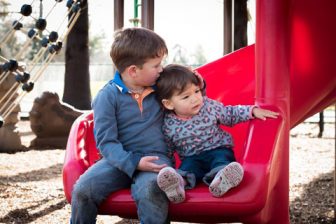By Julie Holderbaum, Minerva EA/OEA
 A week ago, I was trying to figure out how to rearrange my lesson plans to accommodate my trip to the State House on Wednesday to rally in support of public education.
A week ago, I was trying to figure out how to rearrange my lesson plans to accommodate my trip to the State House on Wednesday to rally in support of public education.
Today I’m in my empty classroom, trying to plan how to teach remotely for the foreseeable future.
Last week, it was important to me to teach the classics. It was important to me that I checked every box in the common core standards. It was important to me that my students did well on their Student Learning Objectives (SLO) so my evaluation would show that I’m a good teacher. It was important to prepare for state testing.
What seemed so imperative last week seems so insignificant today.
Still, while I’ve regained some perspective, I struggle. I’m a Type A teacher who thrives on planning. It’s difficult to plan when there are so many questions and so few answers. I can’t help but feel truly overwhelmed.
I have to take comfort in what we do know, and today, there are five things that I know with absolute certainty.
The world has not stopped. The sun will rise every day. The spring flowers will still grow. My trees will still blossom. There will be worms when it rains and that delicious smell of spring in the air. There will be rainbows.
This is temporary. While we do not know exactly when our classrooms will be filled with students, we know that there will come a day when our routines will go back to normal. Remote learning and teaching are not going to last forever. Someday we will once again stress over SLOs and state testing and jammed copiers and spotty wifi. Someday we will once again all be together under the Friday night lights cheering for our football team. The stormy waters we are being tossed about in will settle down.
This is an opportunity. It’s an opportunity for us to teach what really matters in our curriculum without worrying so much about the common core standards. I’m teaching my favorite poems and short stories and essays and I’m not worrying about whether or not they fit in with where we were in my prescribed and detailed and time-tested curriculum when we went on break. Not every content area lends itself to that freedom as much as English does, but surely in any grade and any subject, we can use this as an opportunity to teach the lessons and skills we are truly excited about, and we can get creative with this freedom.

People need human connections. I’ve never wanted to be with strangers at a concert or a movie theater more in my entire life. I’ve never wanted to hug my friends and co-workers as much as I do right now. I hope that when this is over, we will remember not to take for granted the pleasure that comes from human contact, from being in the same place at the same time, whether we are high-fiving strangers at Ohio Stadium after a Buckeye touchdown or raising voices and signs on the steps of the State House, advocating for our profession.
Our kids need us. They need us to maintain those human connections with them, because for many of them, school was the one place they felt safe and cared for.
They need us to show them how to persevere through challenging times, how to be flexible, how to keep a positive attitude. They need us to let them know that we are still here, that we still care, and that they are not alone.
So, in focusing on these five things I know, I hope to take action in ways that keep me from feeling too anxious in this time of uncertainty.
I will spend time outside, sun on my face, watching the progress of my tulips and letting my dog pull me along on a walk.
I will use this time to re-evaluate my teaching practice. This forced flexibility has made me realize that I’ve become too locked in to what I teach and how I teach it. I’m now able to search for new lesson ideas online and to try out the plethora of educational websites I’ve just never had time to explore. Most importantly, I am going to rethink whether spending so much time on the “classics” from the past (Paine, Poe, Emerson, Twain) is worth it when it means I never get time to teach more recent authors (Angelou, Atwood, Lamott, Allende). Someday we will be back in our classrooms with kids, but how I spend those days and what we study may not look the same at all.
I will do everything in my power to keep those human connections with my students, for my sake as well as theirs. I’m going to call and email and Remind and Google Classroom and Flipgrid until those teenagers I love are completely annoyed, but they will know I care and that is what matters.
 We know that academic and social development happens best in a school setting when students are engaging with their peers and teachers, and we just cannot provide that to them right now. But in the meantime, no one is better at meeting unexpected challenges than educators. Education has been derailed by state mandates in recent years, but this is a chance to get back to what it’s really all about, what it should always be about: the kids and their wellbeing. We didn’t go into teaching to provide politicians with data to determine if we have good schools or not. We went into teaching because we care about kids. If we keep that in mind, remote learning won’t feel so remote.
We know that academic and social development happens best in a school setting when students are engaging with their peers and teachers, and we just cannot provide that to them right now. But in the meantime, no one is better at meeting unexpected challenges than educators. Education has been derailed by state mandates in recent years, but this is a chance to get back to what it’s really all about, what it should always be about: the kids and their wellbeing. We didn’t go into teaching to provide politicians with data to determine if we have good schools or not. We went into teaching because we care about kids. If we keep that in mind, remote learning won’t feel so remote.
Maybe my students won’t get the exact same lessons they would have if we weren’t in this situation, but I have to be okay with that. I suspect that the lessons we all learn during this unplanned hiatus might be the kind that mean far more and last much longer than anything a perfectly planned unit can teach anyway.
— Julie Holderbaum is an English Instructor and an Academic Challenge Advisor at Minerva High School, Minerva, Ohio.


